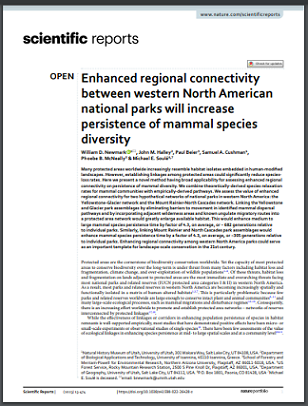
Many protected areas worldwide increasingly resemble habitat isolates embedded in human-modifed landscapes. However, establishing linkages among protected areas could signifcantly reduce speciesloss rates. Here we present a novel method having broad applicability for assessing enhanced regional connectivity on persistence of mammal diversity. We combine theoretically-derived species relaxation rates for mammal communities with empirically-derived pathways. We assess the value of enhanced regional connectivity for two hypothetical networks of national parks in western North America: the Yellowstone-Glacier network and the Mount Rainier-North Cascades network. Linking the Yellowstone and Glacier park assemblages by eliminating barriers to movement in identifed mammal dispersal pathways and by incorporating adjacent wilderness areas and known ungulate migratory routes into a protected area network would greatly enlarge available habitat. This would enhance medium to large mammal species persistence time by factor of 4.3, on average, or ~ 682 generations relative to individual parks. Similarly, linking Mount Rainier and North Cascades park assemblages would enhance mammal species persistence time by a factor of 4.3, on average, or ~305 generations relative to individual parks. Enhancing regional connectivity among western North America parks could serve as an important template for landscape-scale conservation in the 21st century.














